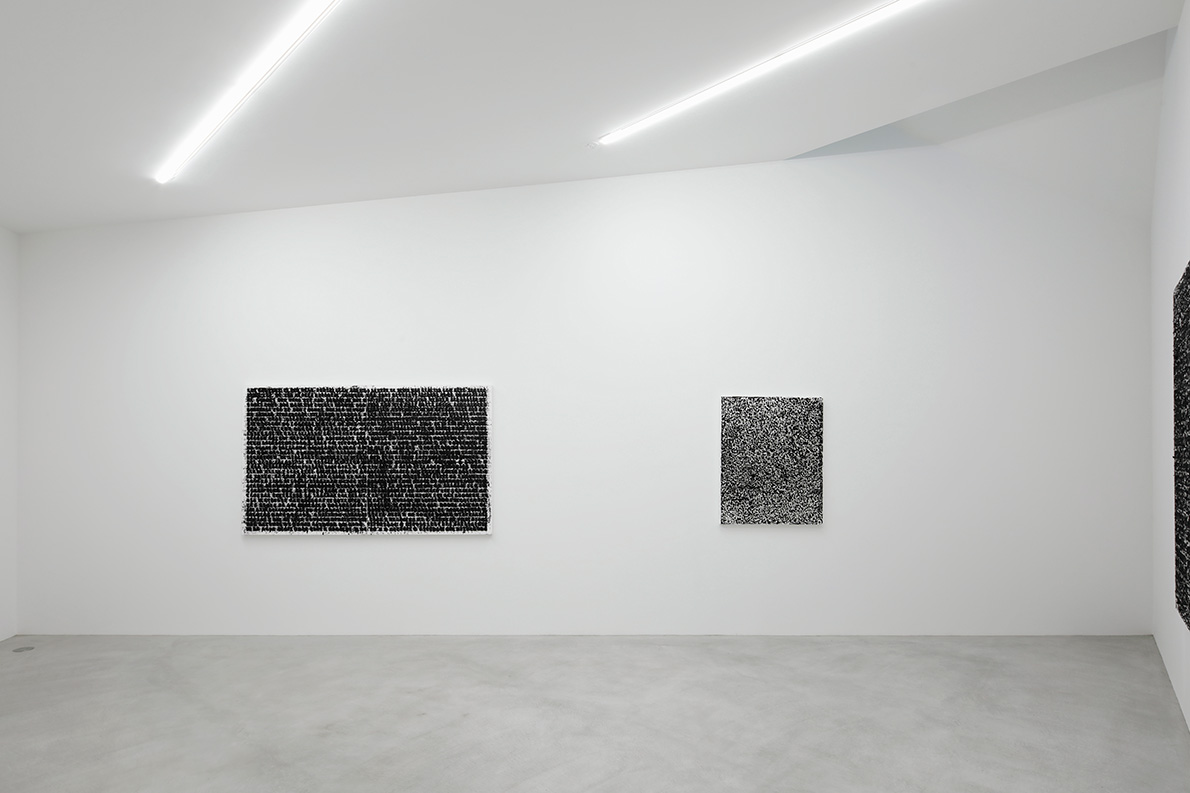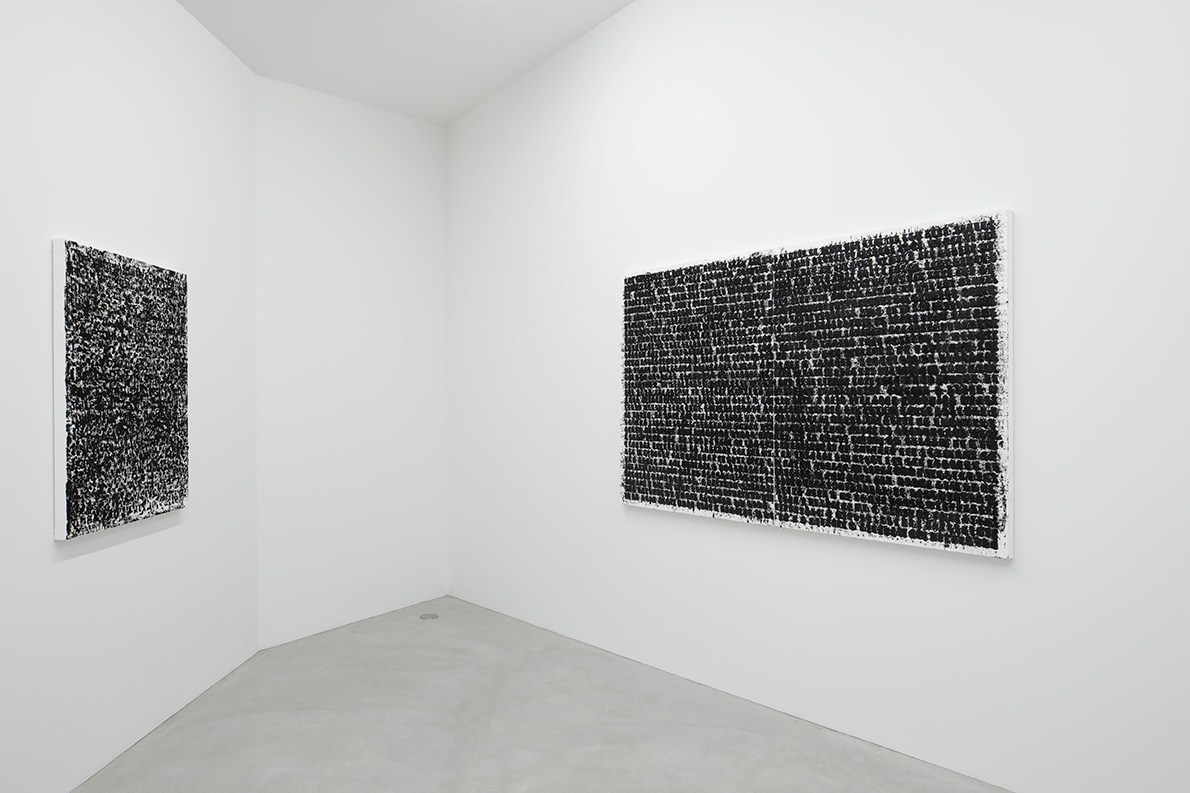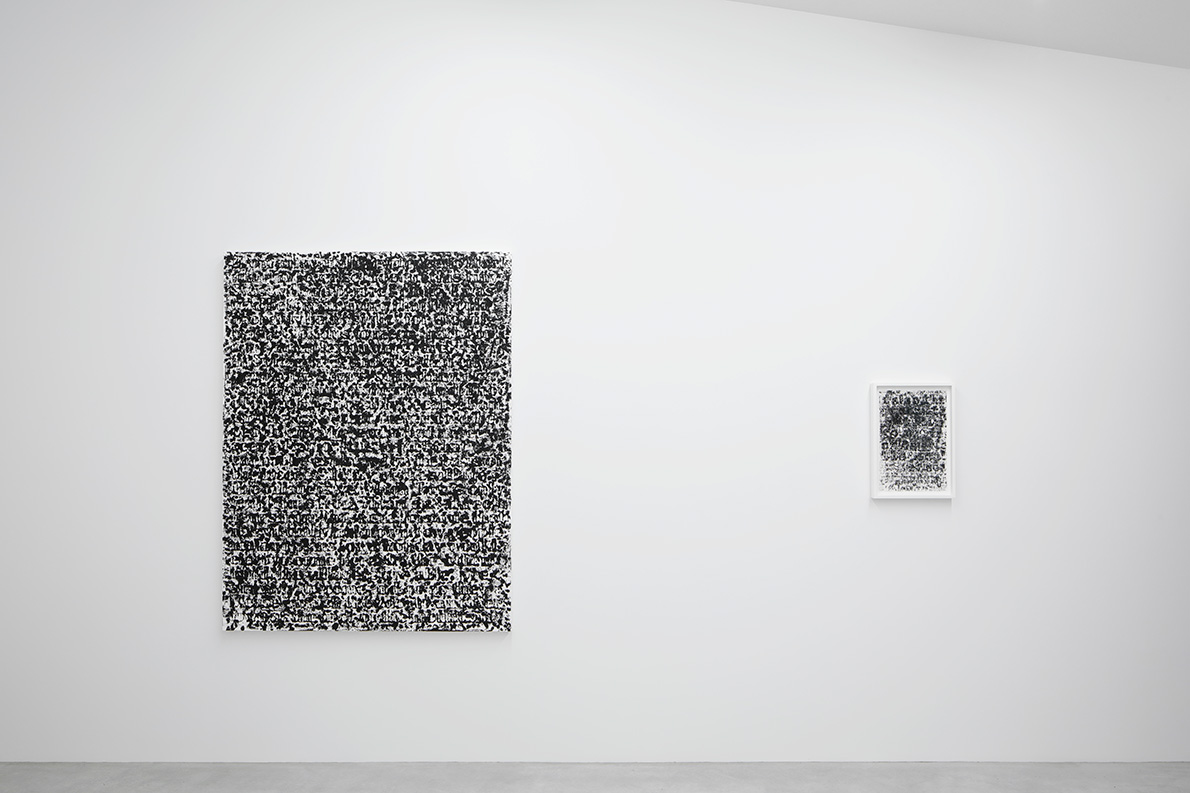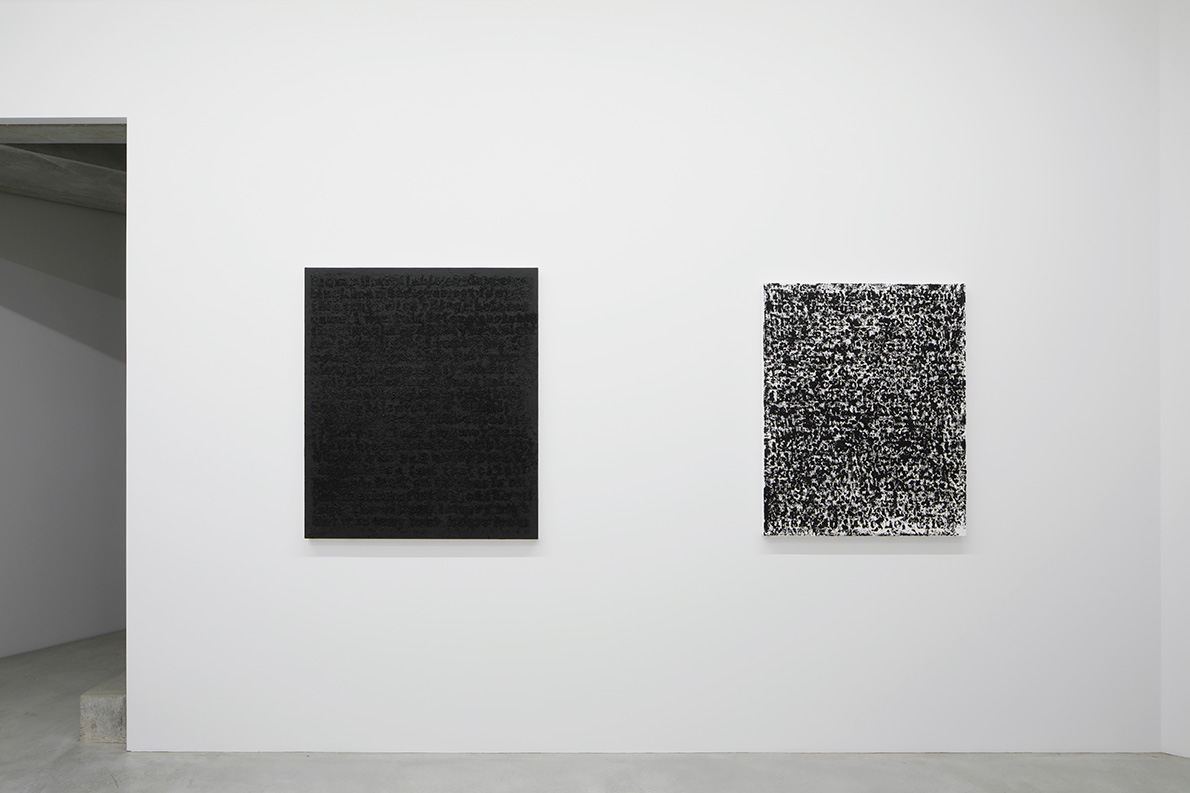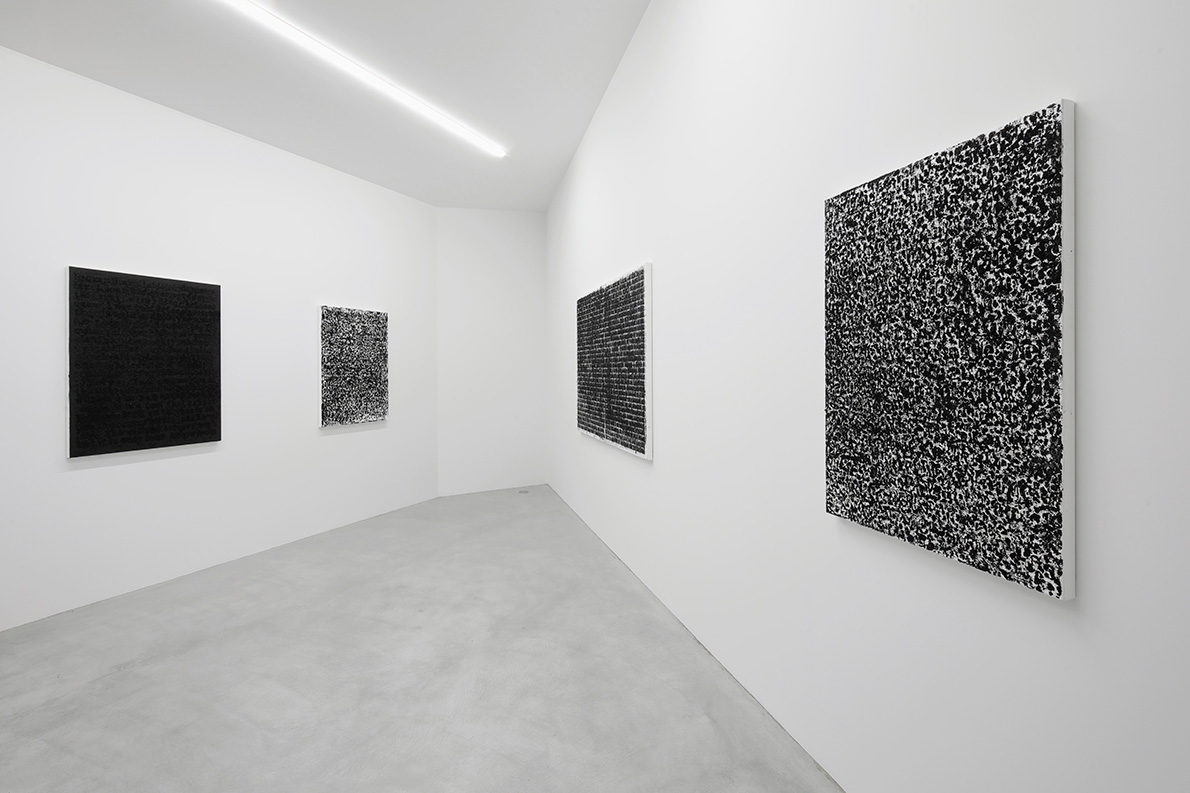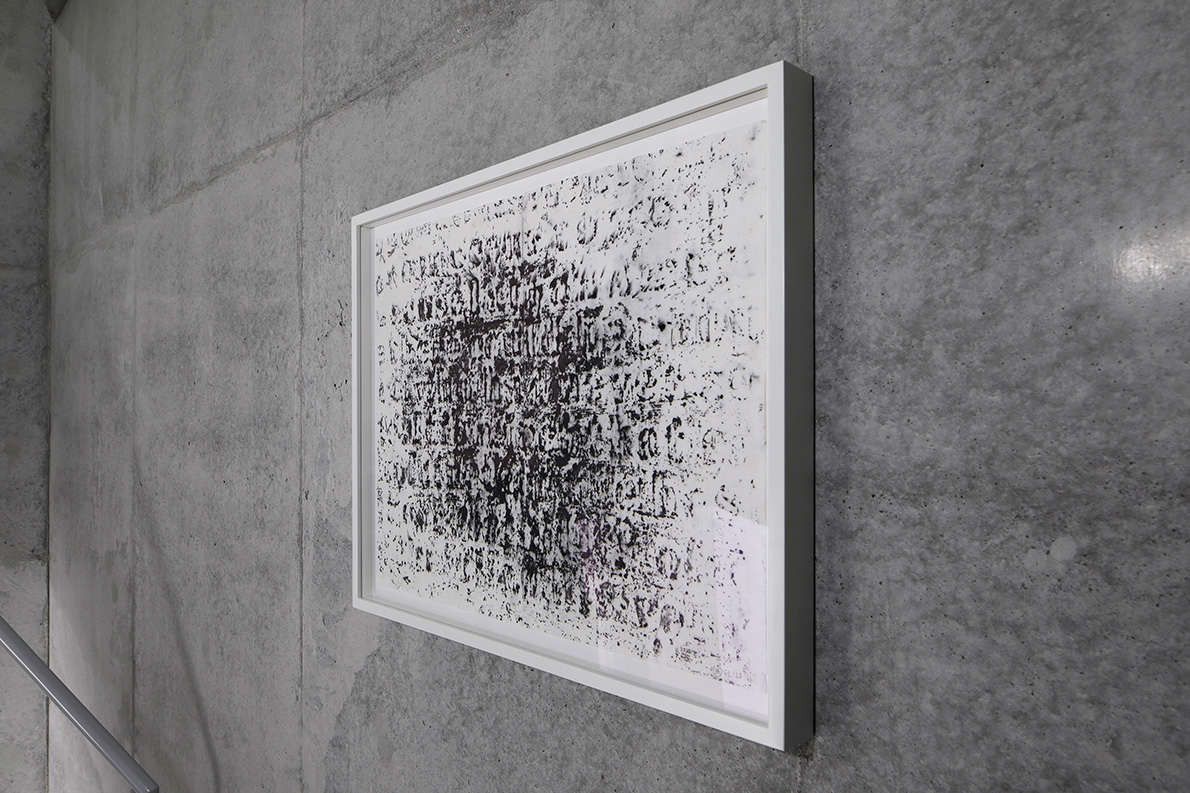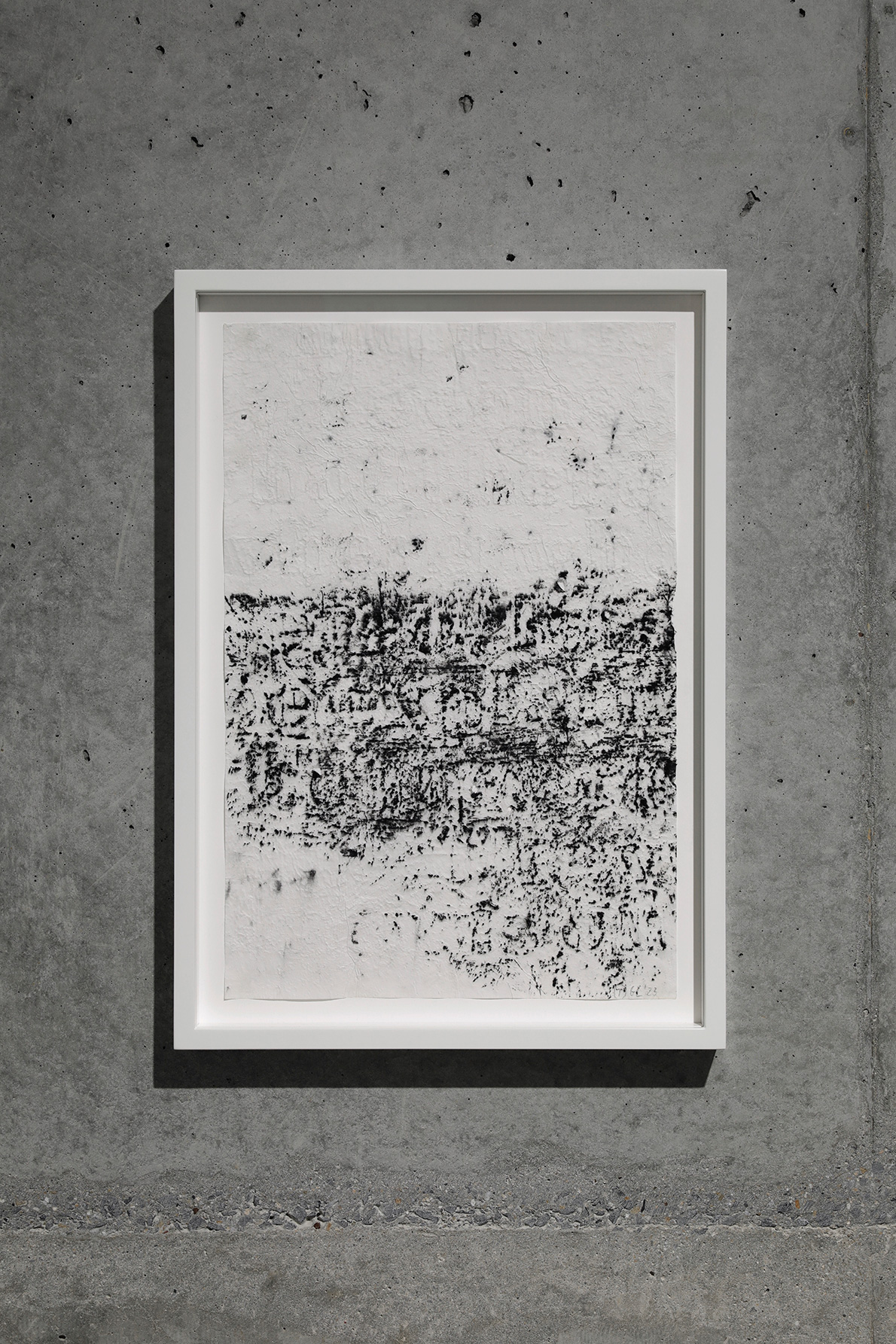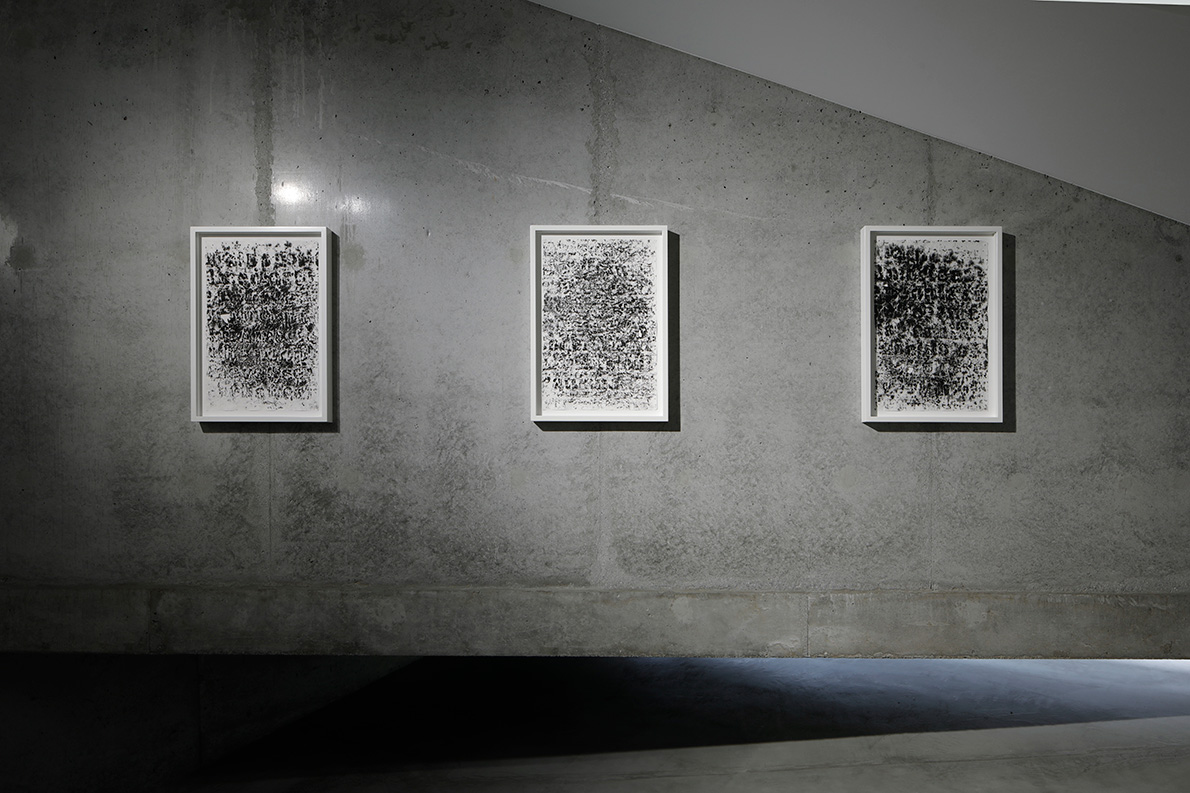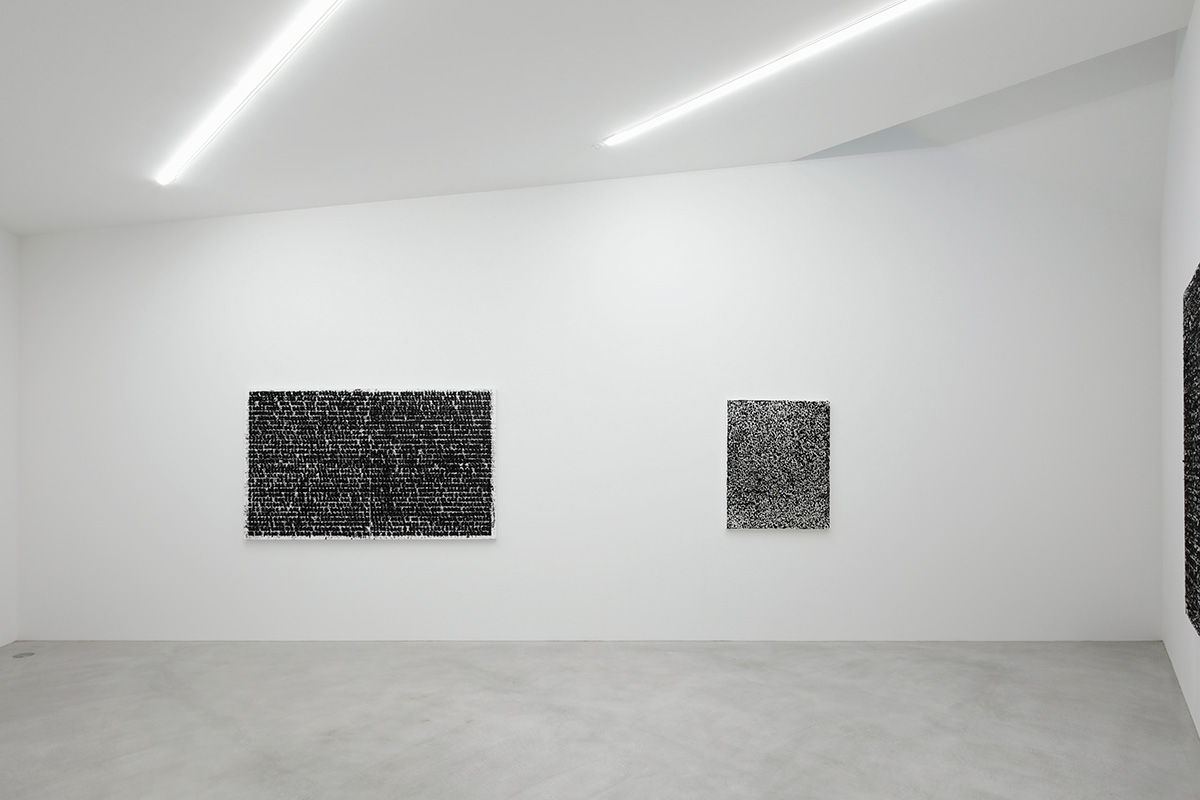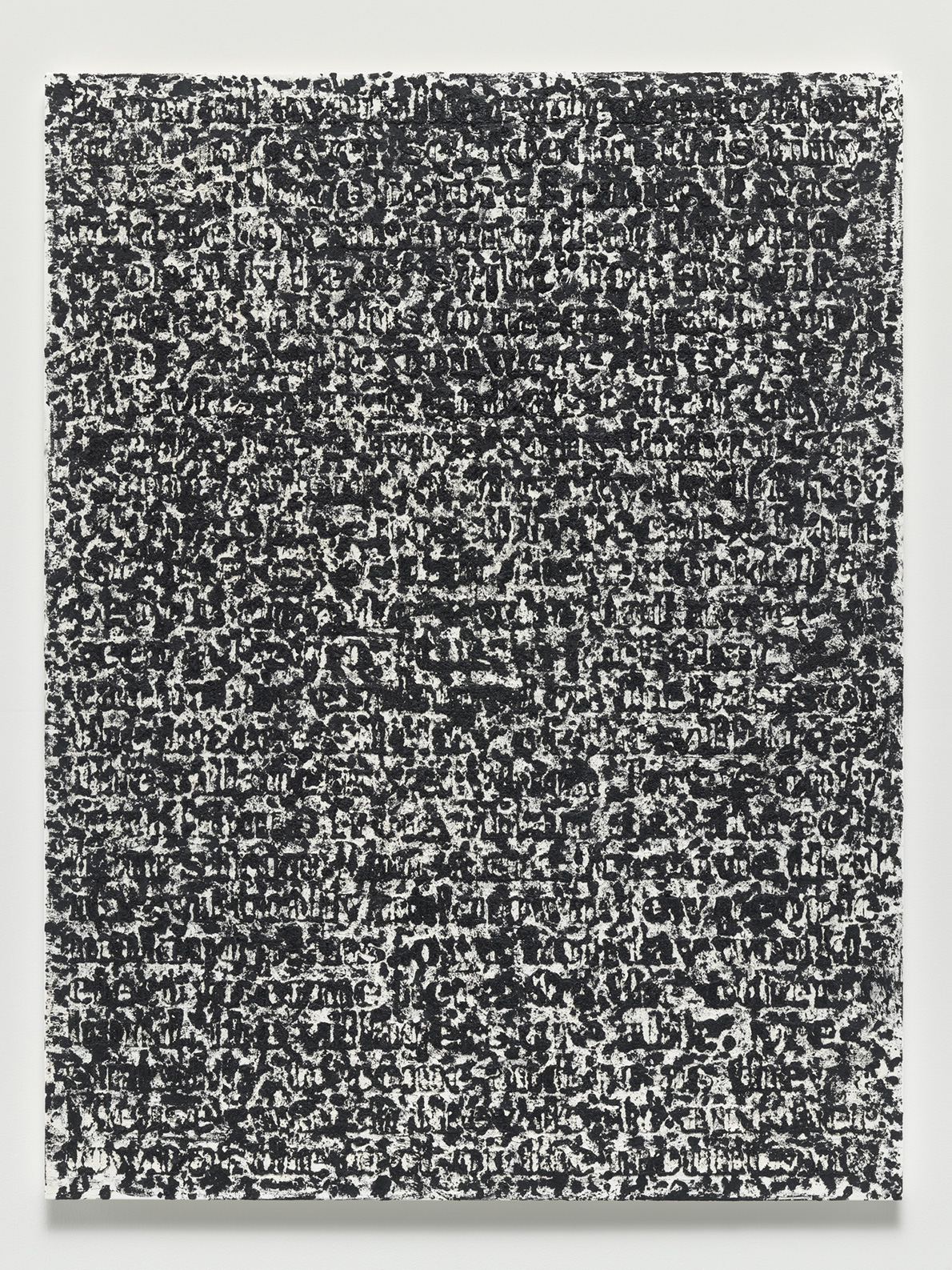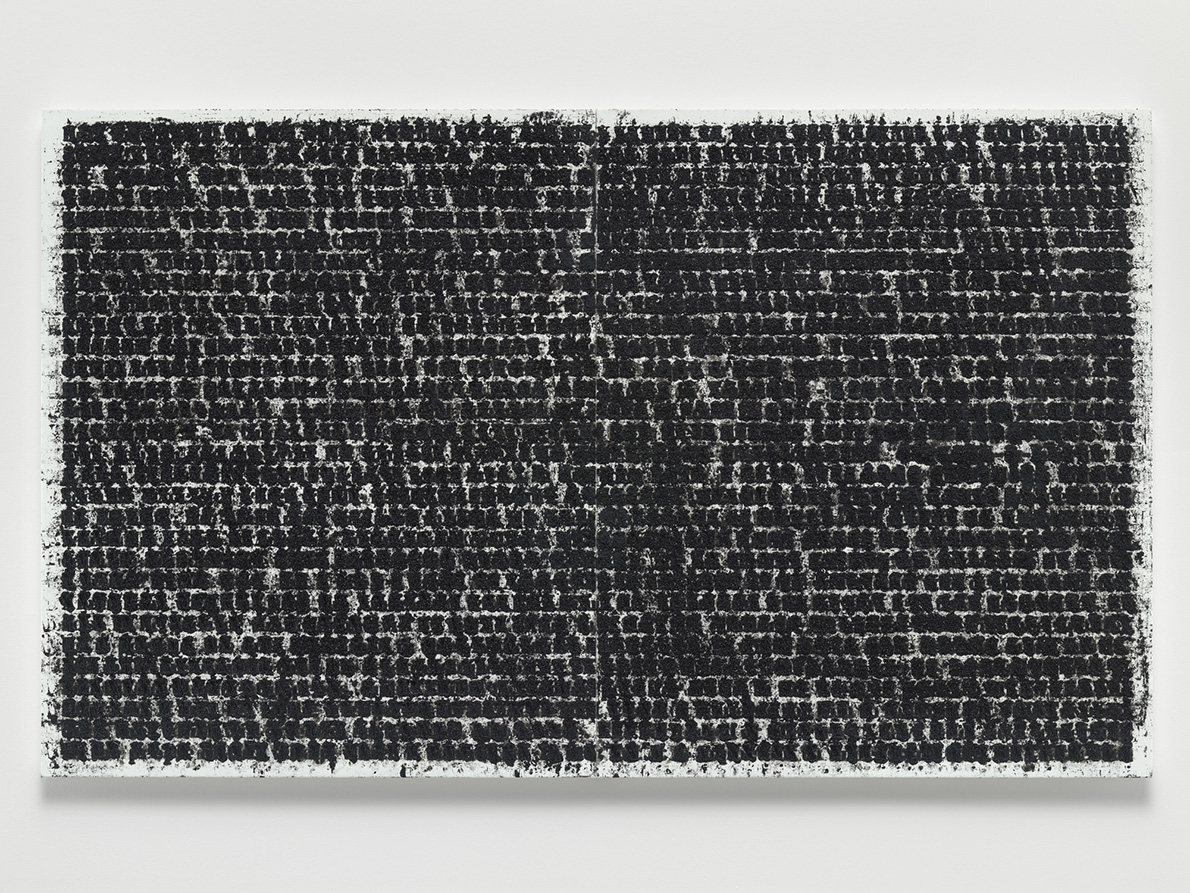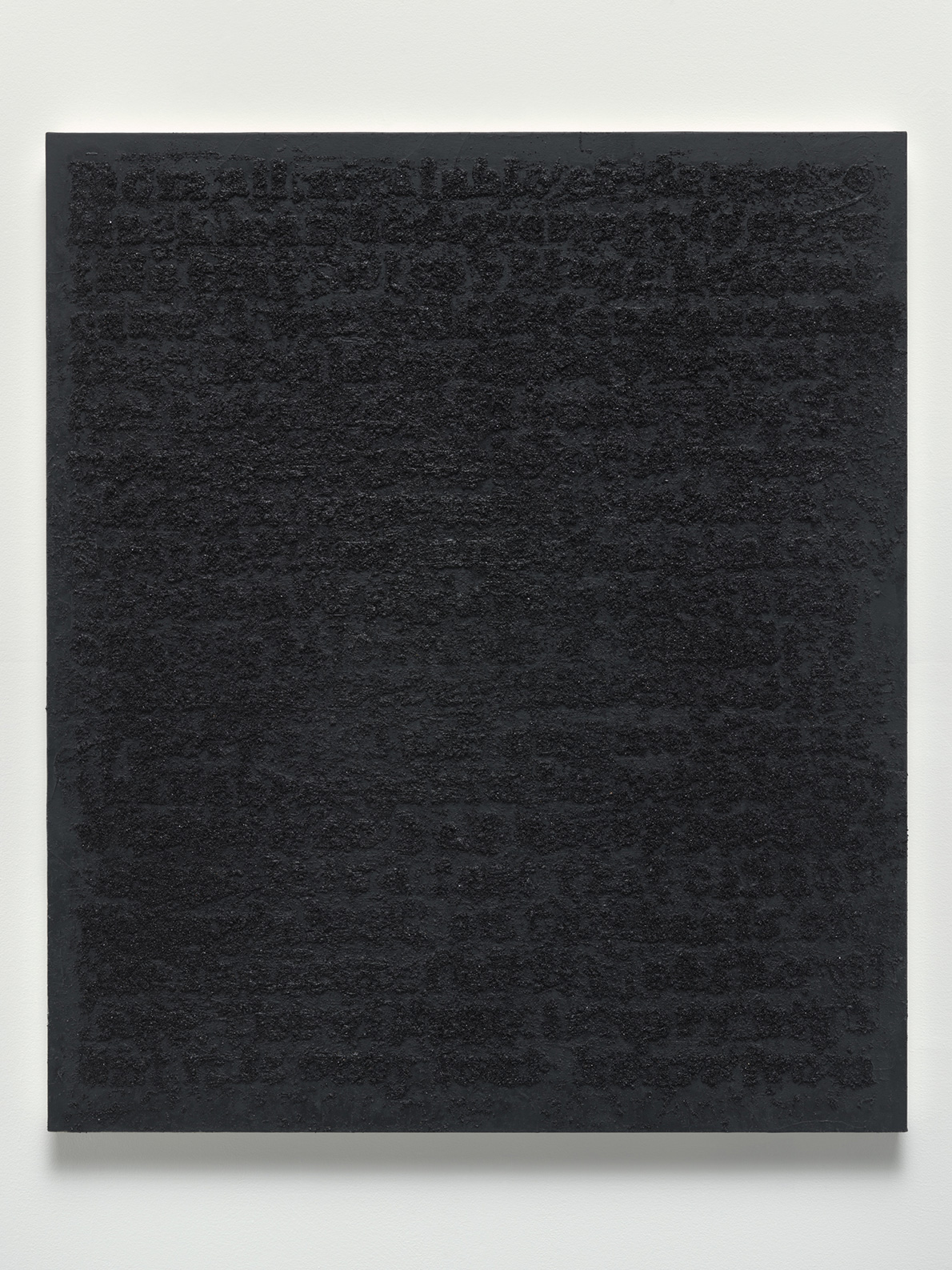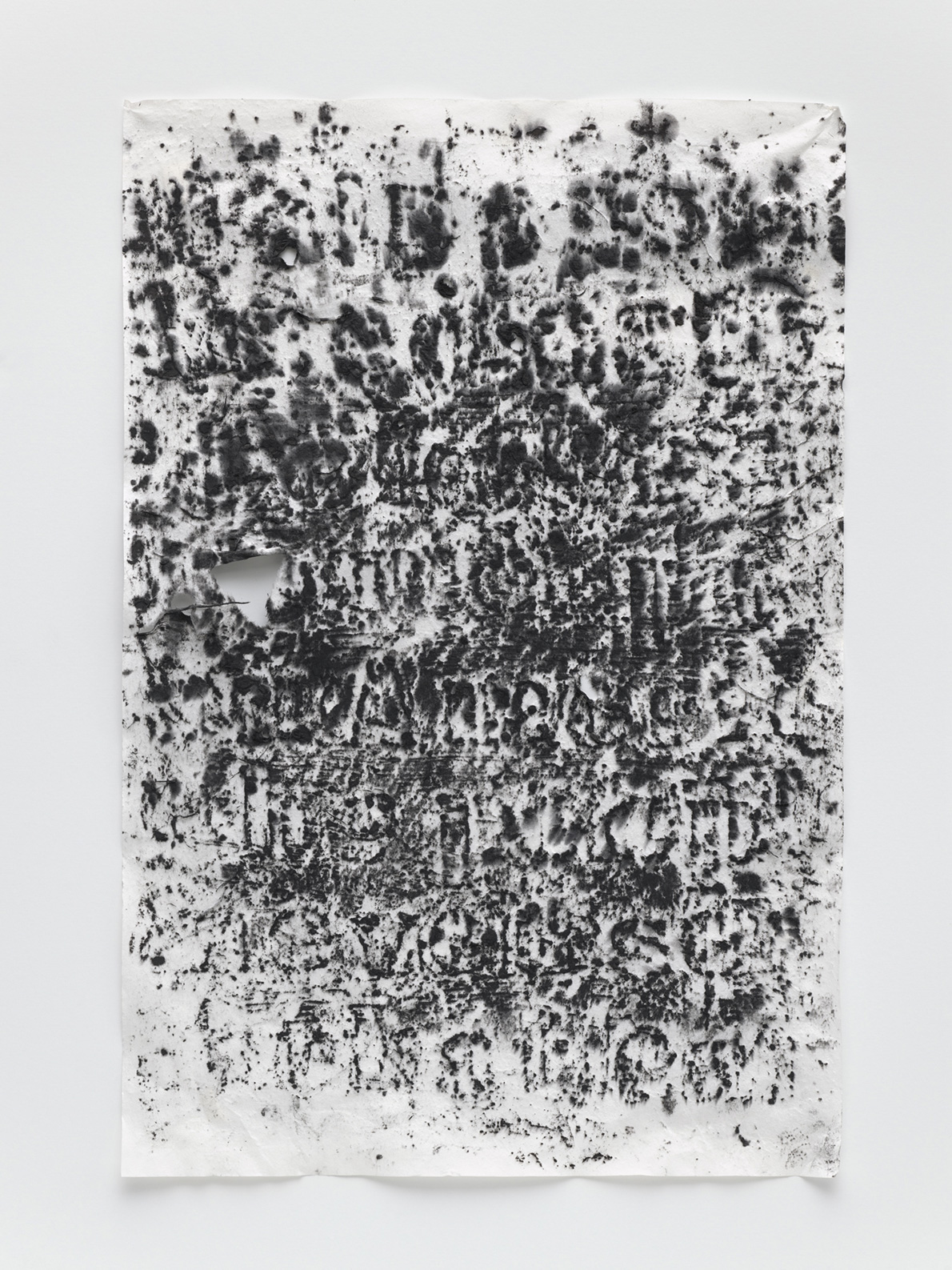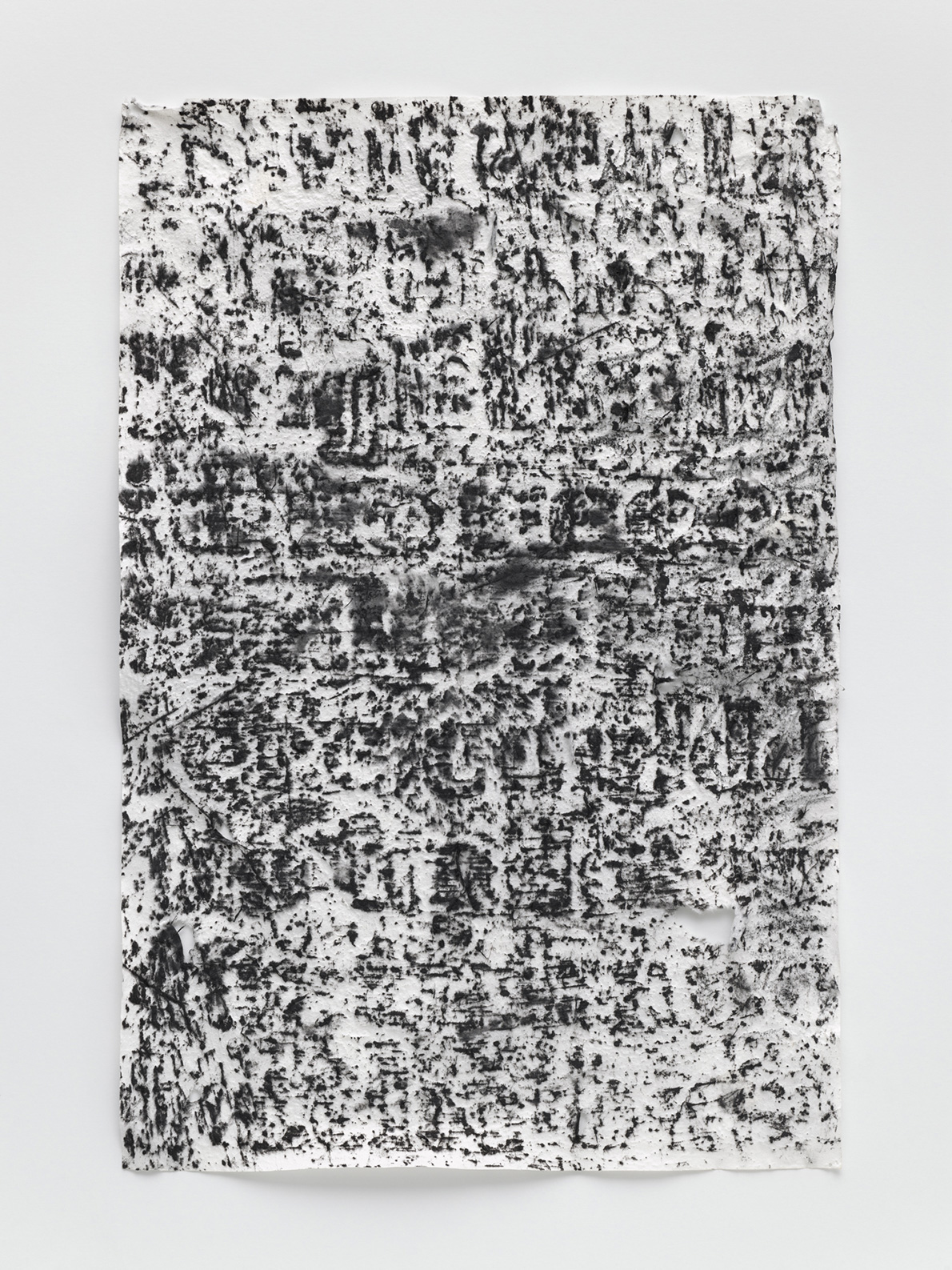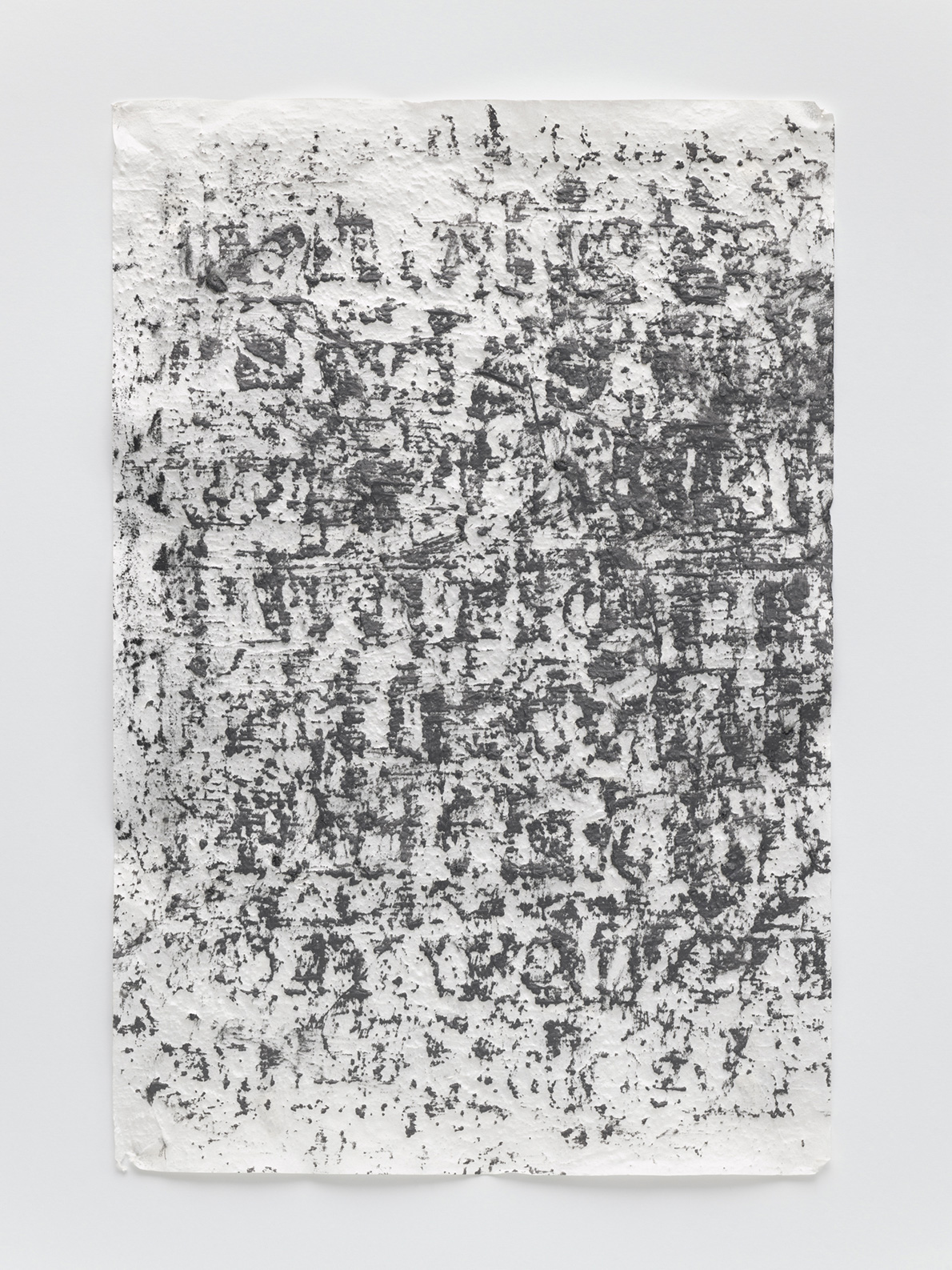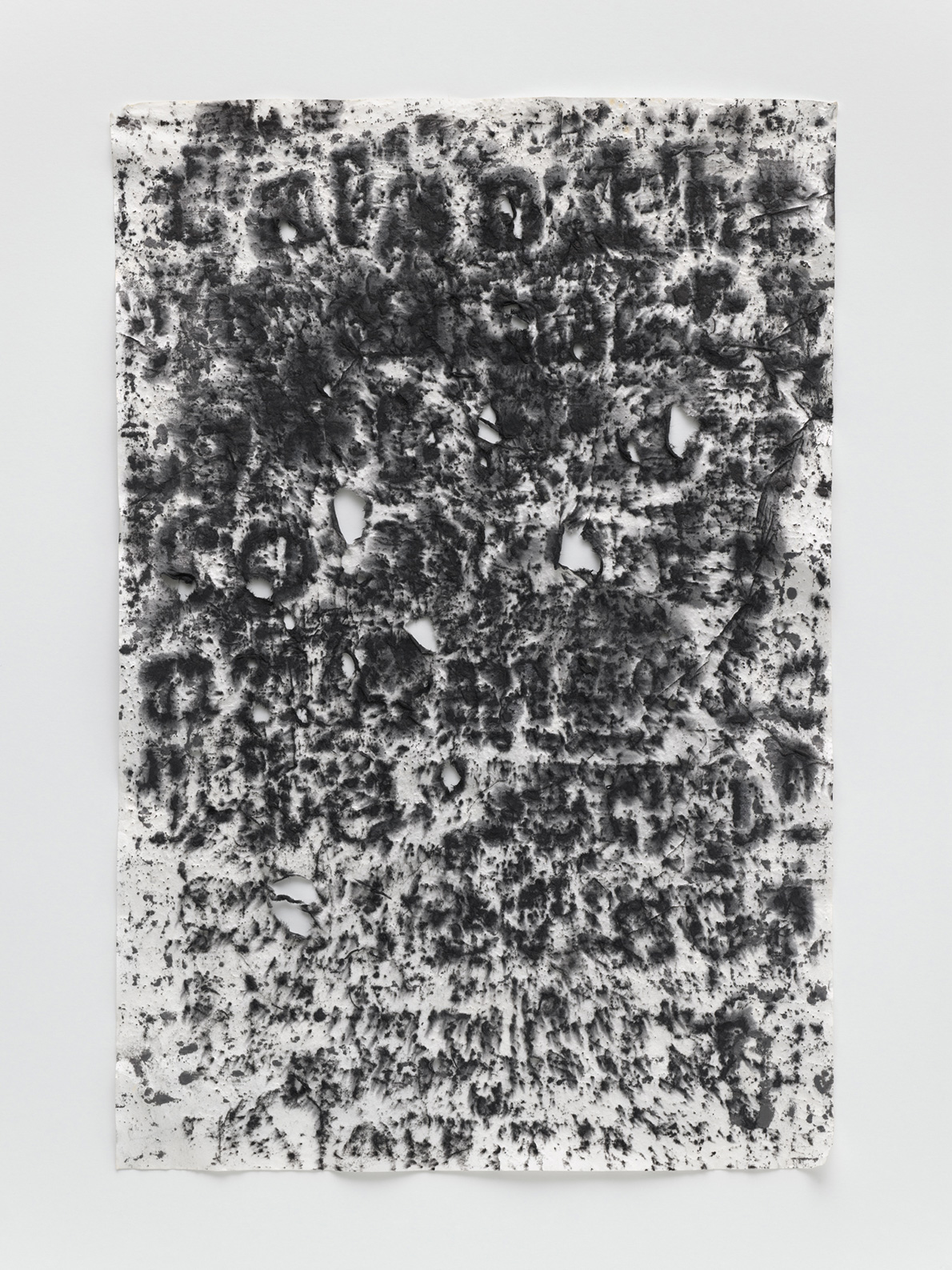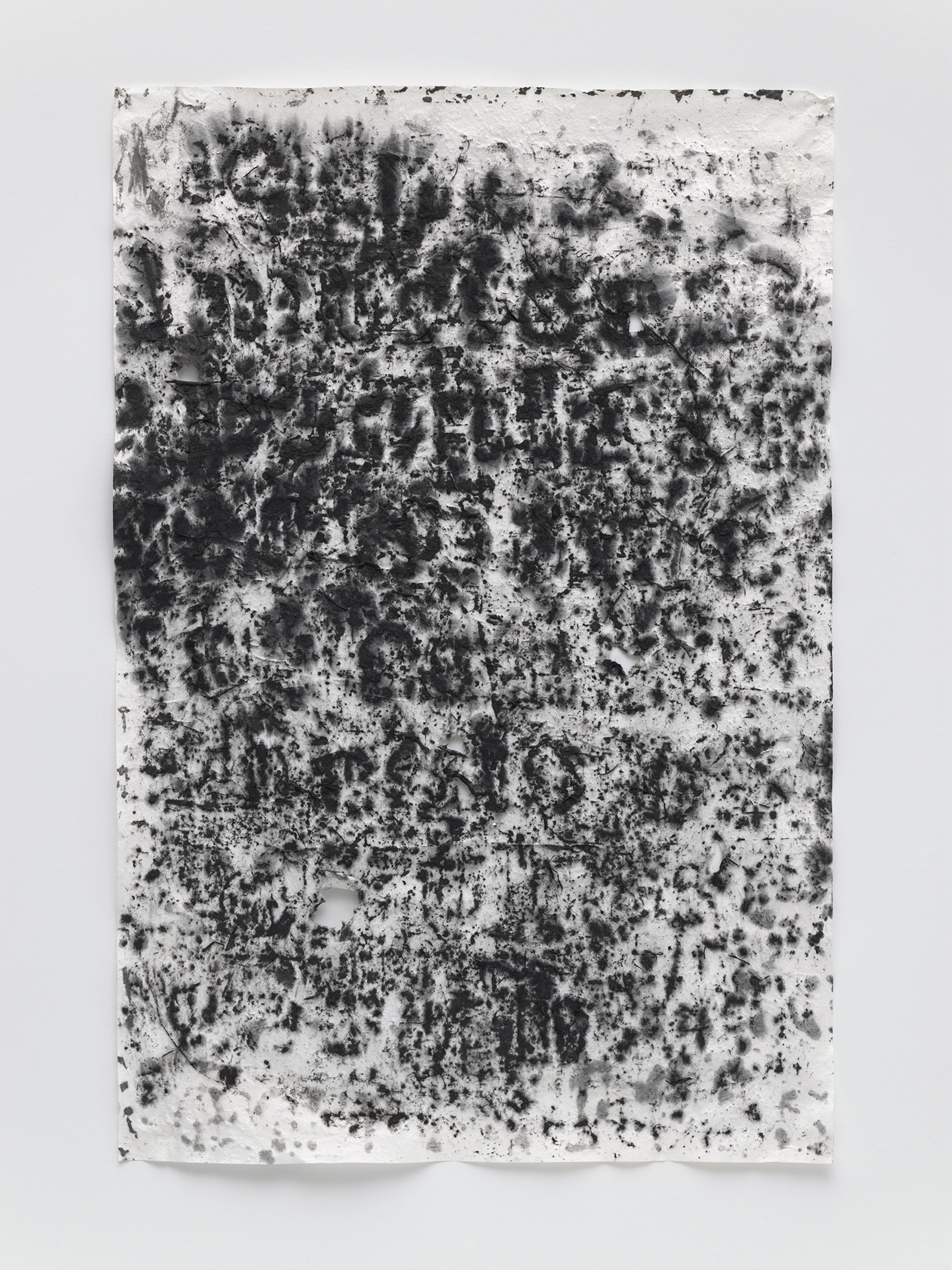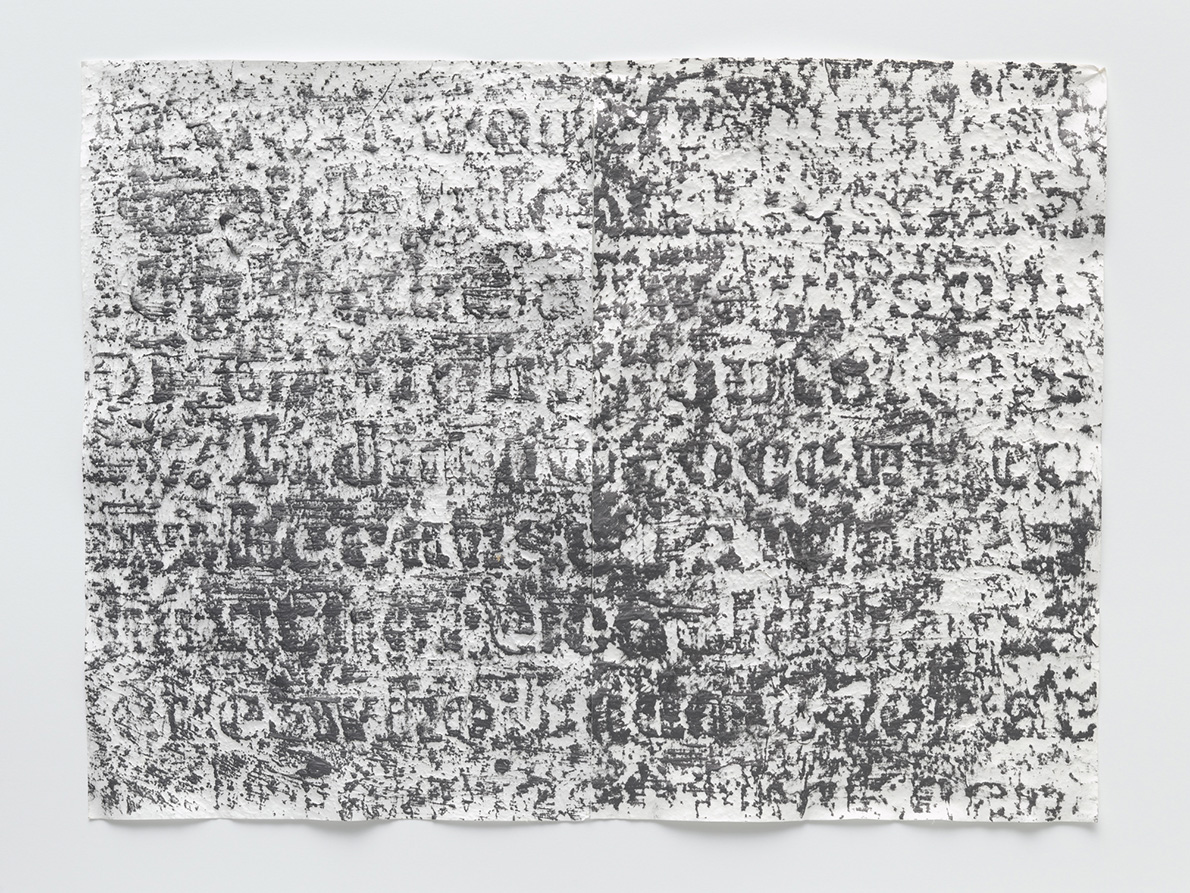Static #1, 2023
Oil stick, coal dust and gesso on canvas
40 x 32 inches (101.6 x 81.3 cm)
Static #2, 2023
Oil stick, coal dust and gesso on canvas
40 x 32 inches (101.6 x 81.3 cm)
Static #5, 2023
Oil stick and gesso on canvas
67 x 51 inches (170.1 x 129.5 cm)
Redacted, 2023
Oil stick, coal dust and gesso on two canvases
Overall: 47 x 78 inches (119.4 x 198.1 cm)
Each: 47 x 39 inches (119.4 x 99.1 cm)
Stranger Study #42, 2023
Oil stick, coal dust, acrylic, and pencil on canvas
47 x 39 inches (119.4 x 99.1 cm)
Untitled #1, 2023
Carbon and graphite on Kozo paper
18 x 12 inches (45.7 x 30.5 cm)
Untitled #3, 2023
Carbon and graphite on Kozo paper
18 x 12 inches (45.7 x 30.5 cm)
Untitled #4, 2023
Carbon and graphite on Kozo paper
18 x 12 inches (45.7 x 30.5 cm)
Untitled #5, 2023
Carbon and graphite on Kozo paper
18 x 12 inches (45.7 x 30.5 cm)
Untitled #7, 2023
Carbon and graphite on Kozo paper
18 x 12 inches (45.7 x 30.5 cm)
Untitled #8, 2023
Carbon and graphite on Kozo paper
18 x 12 inches (45.7 x 30.5 cm)
Untitled #10, 2023
Carbon and graphite on Kozo paper
18 x 12 inches (45.7 x 30.5 cm)
Untitled #11, 2023
Carbon and graphite on Kozo paper
18 x 12 inches (45.7 x 30.5 cm)
Untitled #15, 2023
Carbon and graphite on two sheets of Kozo paper
18 x 24 inches (45.7 x 61 cm)
Untitled #16, 2023
Carbon and graphite on two sheets of Kozo paper
18 x 24 inches (45.7 x 61 cm)
OSCAAR MOULIGNE is pleased to announce its inaugural exhibition Glenn Ligon opening on November 25, 2023 and on view until February 24, 2024.
For this exhibition, which marks a decade since the artist’s work was first shown in Japan, Glenn Ligon will premiere two new bodies of work: Static paintings and a series of untitled drawings on Kozo paper. These works, which draw upon legacies of classical art and writing, modern painting, and conceptual art, are created using the artistic technique of rubbing, manifesting a distinctive physicality with different forms and material and varying degrees of legibility, and ultimately, abstraction. Both series employ excerpts of text from James Baldwin’s 1953 essay “Stranger in the Village,” which recounts the author’s experience in a small village in Switzerland, where for many he was the first Black man they had ever seen. Ligon’s iconic use of Baldwin’s text alludes to historical, political, and social concerns with race relations and national identity in present-day America.
In his Static paintings, Ligon stenciled Baldwin’s text in white oil stick on a gesso ground, then rubbed black oil stick on the top surface of the letters. With repeated stencils and overlapping layers, the letters are increasingly smudged and illegible, creating different degrees of abstraction based on the artist’s “interventions.” Coal dust is also used in some of the works, as with most of the artist’s Stranger paintings, which the artist began in 1997.
The term “static” can refer to the absence of a coherent transmission signal on a radio or television and the resulting “noise.” Ligon’s new Static paintings appear at first glance to evoke visual representation of such noise, but nevertheless, the forms that emerge on the canvas cohere into a striking composition that builds upon the idea of “improvisational abstraction,” which is central to the artist’s practice.
For his new series of drawings, Ligon has again used the technique of rubbing, a method that can be traced back to ancient art; described as frottage by Surrealist artist Max Ernst, it was regarded as “a way to probe the subconscious mind.” To create these works, the artist rubbed carbon and graphite on Kozo paper across different Stranger paintings. This process of “translation” between the two “surfaces”– the canvas and paper — together with the physical gestures of rubbing, create a constant oscillation between legibility and abstraction, accident and intention, conscious and subconscious.. Such themes recur throughout the artist’s practice and are also evident in numerous sources of inspiration ranging from the works of Henri Michaux, Norman Lewis and Jean Dubuffet, to Chinese ink rubbings, asemic writing, and concrete poetry.
Another work in the exhibition that looks to Baldwin’s text and recontextualizes it, is the new diptych painting Redacted. Ligon has crossed out each letter with an ‘X’ to create a pattern of multiplicity, but one that gradually departs from the formal structure of repetition. In addition to rendering the composition increasingly illegible and abstract, the letter/symbol ‘X’ evokes multiple meanings: the unknown; the act of correction; or a political act, for example, when Malcolm Little changed his name to Malcolm X. The intense physical presence of the artist’s hands in the works are signified by gestural interventions that prod the viewer to engage in the present moment as well as reflect on our past histories- to look at ourselves and the world we live in.
About the artist
Glenn Ligon (b. 1960, lives and works in New York) is an American artist whose work explores notions of abstraction and the legibility of language. He works across a wide range of media including painting, neon, printmaking, photography, installation, sculpture, and video. Ligon often incorporates text and found imagery within the contexts of American history, literature, culture, and social constructs, and his sources range from texts by writers such as James Baldwin, Zora Neale Hurston, and Gertrude Stein, to stand-up comedy routines, children’s coloring books, and slave narratives. Since the 1990s, Ligon has been recognized for creating works that push the boundaries of abstraction as well as serve as visual critiques of questions of race, sexuality, and identity through both personal and collective narratives.
OSCAAR MOULIGNEは、初となる展覧会「グレン・ライゴン」を、2023年11月25日から2024年2月24日まで開催いたします。
日本での初個展から10年の節目となる今年、本展でグレン・ライゴンは2種の新作を発表します。《Static》と題されたペインティング、そして楮(こうぞ)紙を用いた無題のドローイング・シリーズです。これらは、古典的な芸術や書、近代絵画、コンセプチュアル・アートといった伝統に立脚し、こするという技法を使って制作され、異なるさまざまな形式や素材を通じて独特の物質性を明確に打ち出しつつ、文字の読み取り可能性、形式、素材、さらには抽象性などの点で多様なひろがりをみせます。どちらのシリーズも、アフリカ系アメリカ人作家ジェイムズ・ボールドウィンが、ほぼ誰も黒人を見たことのないスイスのある小さな村で過ごした経験を綴った試論「Stranger in the Village」(1953年)を象徴的に使いながら、今日の米国で、人種間の関係やナショナル・アイデンティティをめぐる歴史的、政治的、社会的問題の数々を暗示します。
《Static》ペインティングでライゴンは、ジェッソで下地塗りを施したカンヴァスに、白のオイルスティックでボールドウィンのテクストをステンシル転写し、次に文字の上面に黒のオイルスティックをこすりつけます。ステンシル転写を繰り返し、何層も重ねることで、文字はどんどんかすれて読み取れなくなっていき、作者の「介入」に応じて度合いの異なる抽象性が創り出されます。なかには、1997年に始まったライゴンの代表作《Stranger》ペインティングと同じく、炭塵を使用している作品もあります。
「Static」という語には、ラジオやTVでシグナルの送信が妨害されて生まれる「ノイズ」の意味もあります。ライゴンの新作《Static》シリーズは一見、そうしたノイズを視覚的に再現したものにみえますが、むしろカンヴァス上に現れた複数の形はひとつになり、驚くべきコンポジションをつくり出します。その根底にあるのは、ライゴンの実践の核心を成す「即興的抽象」の概念です。
ライゴンは新作ドローイング・シリーズでもこする手法を駆使します。古代からアートに用いられてきたこの技法を、シュルレアリスム芸術家マックス・エルンストは「フロッタージュ」と呼び、「意識下を探るための方途」とみなしました。制作に際してライゴンは、やはりボールドウィンのテクストにもとづく《Stranger》ペインティングに楮紙をあて、カーボンや黒鉛をこすりつけます。2つの「表面」──カンヴァスと紙──のあいだでおこなわれるこの「転写」プロセスが、こするという物理的動作と組み合わされた結果、作品は読み取れる文字/抽象、偶然的/意図的、意識/意識下のあいだを絶え間なく揺れ動くことになります。こういったテーマ群は、これまでのライゴンの実践に繰り返し登場しているだけでなく、アンリ・ミショーやノーマン・ルイス、ジャン・デュビュッフェに始まり、中国の拓本、無意味文 、コンクリート・ポエム、独学のアーティストたちにまで及ぶ多数の霊感元にも歴然とあらわれています。
本展には、やはりボールドウィンのテクストを新たなコンテクストに位置づける仕事として、新作の《Redacted》二連ペインティングが出品されます。ここでライゴンは画面上の文字をひとつひとつ「X」で抹消していきます。そのため「X」が複製されてパターンをかたちづくることになりますが、それはしだいに反復という形式構造から逸脱していきます。反復しつつも逸脱した結果、カンヴァス上の文字が形として読み取り不能になってくるのに加え、「X」という文字/シンボルが複数の意味──未知のもの、訂正の行為、あるいは、マルコム・リトルがその名をマルコムXに変えたことに見られるような政治の行為──を喚起します。
作品に介入するアーティスト自身の手は、描く身ぶりによって示され、強烈な物理的存在感を放っており、見る者に対して、自分の過去の歴史に思いをめぐらせ、現在と取り組み、自分自身を、そして私たちの生きる世界を見つめるよう促します。
About the artist
グレン・ライゴンは1960年生まれ、ニューヨークを拠点とする米国のアーティスト。作品は、さまざまな「抽象」の概念や言語の読み取り可能性を掘り下げながら、ペインティング、ネオン、版画、写真、インスタレーション、スカルプチャー、ヴィデオなど多様な媒体を駆使。テクストや既成のイメージを、米国の歴史、文学、文化、社会構成概念といったコンテクストに取り込む。ソースはジェイムズ・ボールドウィン、ゾーラ・ニール・ハーストン、ガートルード・スタインといった書き手による文学作品から、スタンドアップコメディ、子ども用の塗り絵、奴隷制をめぐる諸々のナラティヴなど多様。1990年代以降、ライゴンの作品は抽象の限界に挑み、個人的そして集合的なナラティヴを通じて人種やセクシュアリティ、アイデンティティなどの問いを視覚的に批判・検討するものとして評価を確立している。
主な個展:Carré d’Art, Nîmes (2022); Camden Art Centre, London (2014–15); Whitney Museum of American Art, New York (2011); The Power Plant, Toronto (2005); The Studio Museum in Harlem, New York (2001); Kunstverein München (2001); Walker Art Center, Minneapolis (2000–2001); the Institute of Contemporary Art, University of Pennsylvania, Philadelphia (1998). ヴェネツィア・ビエンナーレ、ホイットニー・バイアニュアルにそれぞれ2回(1997, 2015; 1991, 1993)、documenta11 (2002)に参加。近年キュレーターを務めた展覧会:Grief and Grievance: Art and Mourning in America, New Museum, New York (2021); Blue Black, Pulitzer Arts Foundation, St. Louis (2017); Encounters and Collisions, Nottingham Contemporary and Tate Liverpool (2015). 今後開催予定のキュレーションした展覧会: Glenn Ligon: All Over The Place, the Fitzwilliam Museum, University of Cambridge (2024).
ライゴンの作品は世界中の美術館のパーマネント・コレクションに収蔵されている:Art Institute of Chicago; The Broad, Los Angeles; Centre Georges Pompidou, Paris; Dallas Museum of Art; Detroit Institute of Arts; Guggenheim Museum, New York; Hammer Museum, Los Angeles; Hirshhorn Museum and Sculpture Garden, Washington, D.C.; Los Angeles County Museum of Art; Museum of Contemporary Art Chicago; Museum of Contemporary Art, Los Angeles; Museum of Modern Art, New York; National Gallery of Art, Washington, D.C.; Philadelphia Museum of Art; San Francisco Museum of Modern Art; The Studio Museum in Harlem; Tate Modern, London; Walker Art Center, Minneapolis; Whitney Museum of American Art, New York.

